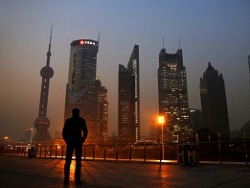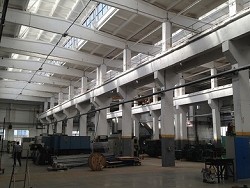
China’s economy is stabilizing. Published today data on GDP growth was not a surprise for the market, the market perceived them quite calmly.
In the first quarter the GDP growth rate was 6.7%, which was in line with expectations.
Also published data on industrial production, retail sales, fixed capital investment and the volume of new loans – all of these indicators showed growth and turned out to be slightly better than expected.
Experts believe that the situation has been stabilized largely due to the easing of monetary policy people’s Bank of China and stabilization in global financial markets.
“The economy has stabilised thanks to the flows of liquidity and improving sentiment in the property market”, – quotes Bloomberg words of the Tao Dong, chief economist for Asia at Credit Suisse Group AG in Hong Kong.
He also noted that it is unclear whether recent improvements are sustainable. According to him, while government incentives play a key role, and must be renewed inflow of private investment.
The industrial output for the reporting period increased by 6.8%. It is worth noting that in recent years the Chinese industry is experiencing a slowdown in growth. In 2011, the volume of production in large enterprises in China rose 13.9%, in 2012 – by 10%, and in 2013 – 9.7%. The growth of industrial production in China by the end of 2014 was 8.3%. In 2015, it increased by 6.1%.
Investments in real estate increased compared with the previous year by 6.2%, while new construction added to 19.2%. Even more jumped-sale of new space – by 35.6%.
Is it good as shown?
Recall that the signs of stabilization in the Chinese economy began to come back earlier. In March, the PMI for the first time in 8 months surpassed the mark of 50 points, that is on a trajectory of growth.
In addition, the profits of major industrial enterprises of the country for the first two months of the year increased by 4.8% in annual terms.
From the February failure recovered and China’s foreign trade. Its volume for the first quarter of 2016, declined in annual terms by 5.9% to 5.2 trillion yuan ($804,3 billion).
After the dismal data for the month of February the experts were waiting for boost, especially as his role was to play the devaluation of the yuan to a basket of currencies of the partner countries. This is what happened: exports rose, while imports were better than expected.
Trading turnover in March 2016 has increased by 8.6% and amounted to 1,91 trillion yuan ($295,4 billion). Exports from China grew by 18.7% and amounted to 1.05 trillion yuan ($rate of 162.4 billion), while imports decreased by 1.7% to 855,5 billion yuan ($132,32 billion). Positive foreign trade balance for this period amounted to $ 194,6 billion yuan ($30.1 billion).
However, some statistics experts on the Chinese economy raises a lot of questions. Analysts turn to data on railway freight transportation, which serves as an indicator of volume of production and consumption in China.
Leaves is absolutely ridiculous the amount of rail freight is falling by 10.5% in 2015, as the economy continues to grow by 6.7%?
As reported by the Chinese business magazine Caixin, the Central planners of China intended to increase rail freight volumes to 4.2 billion tons by 2020, the Average annual growth rate was assumed at 4.3%. Thus, this decline is not part of the planned transition to a consumer economy. They are categorically against this or any other scenario.
And then came the first quarter of 2016, the Volume of railway cargo transportation fell by 9.4% year on year to 788 million tons, according to data of the China railway Corporation. In this case, the volume of railway transportation in 2016 will be reduced by 20% compared to 2014, when it saw a decline. In 2016 the volume will remain ultimately at the level of 2007.








